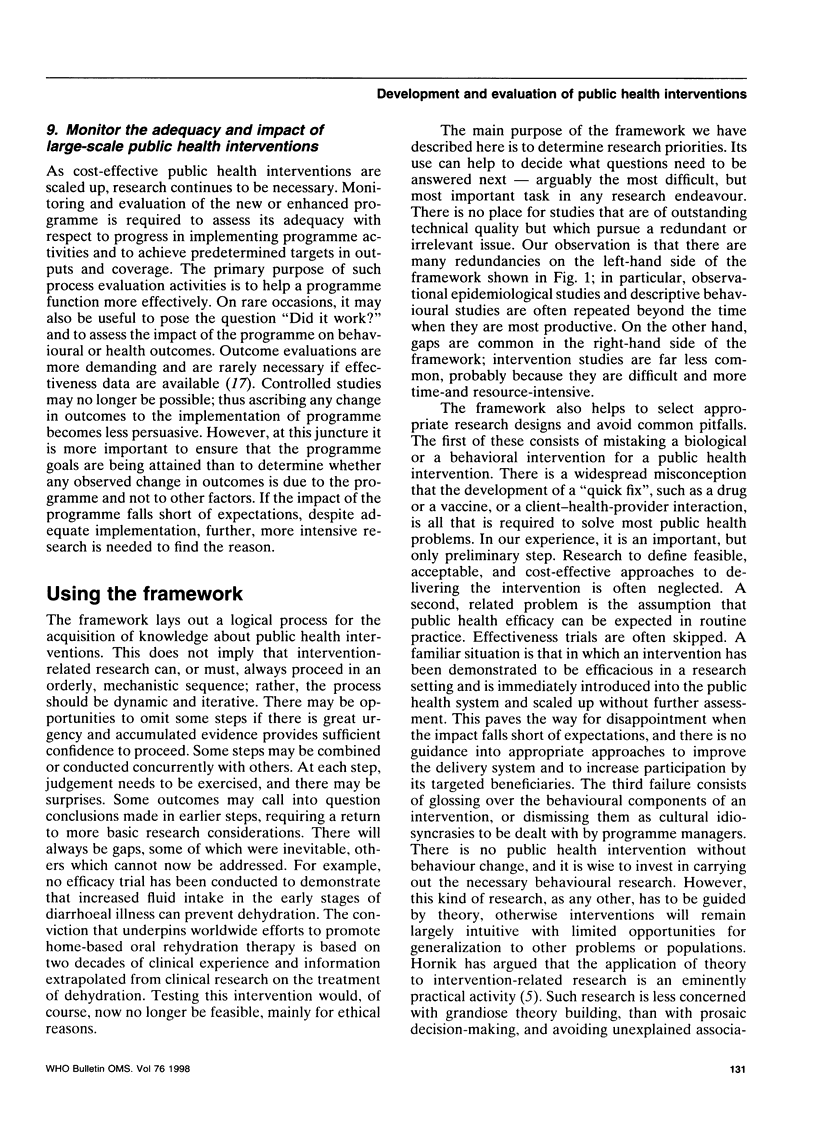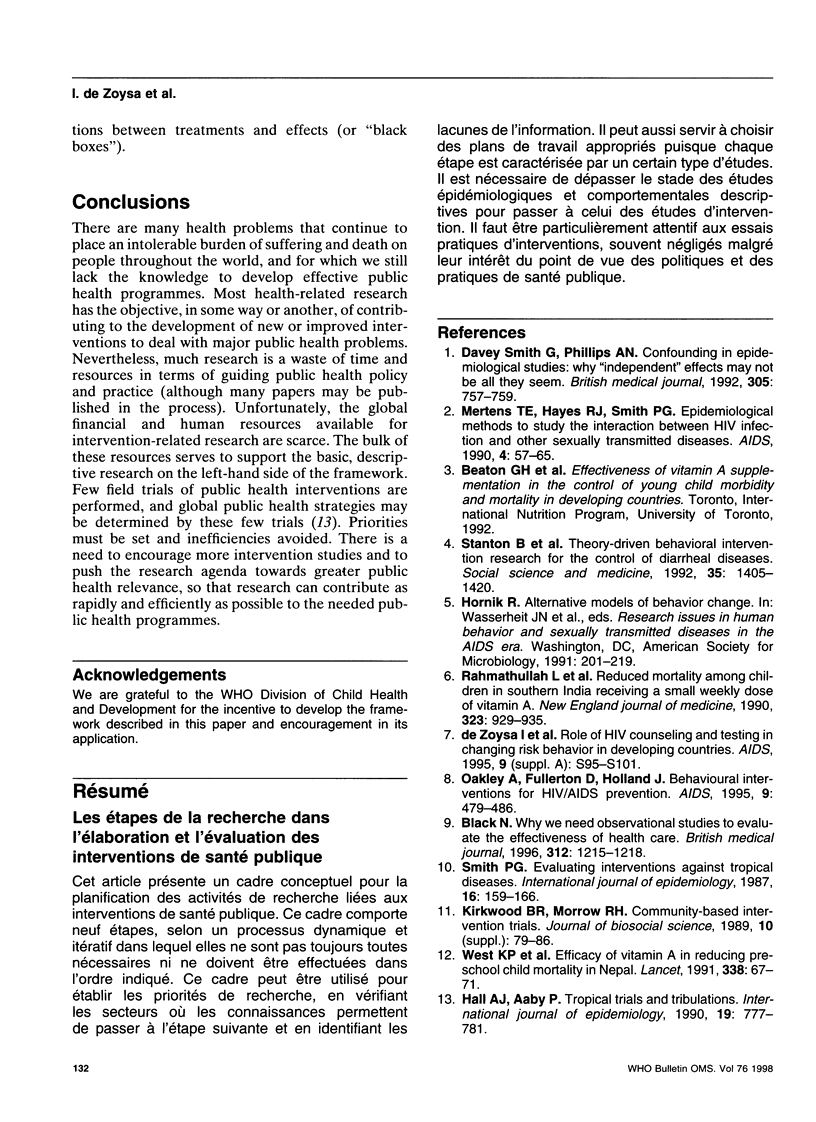Abstract
Presented is a conceptual framework for planning intervention-related research. Altogether, nine steps in the process of developing and evaluating public health interventions are specified. This process is dynamic and iterative, and all steps are not always required, or need follow in sequence. The framework can be used to set research priorities by verifying where there is sufficient knowledge to move forward and by identifying critical information gaps. It can also help select appropriate research designs, as each step is characterized by certain types of studies. Greater effort is required to move beyond descriptive epidemiological and behavioural studies, to intervention studies. Field trials of public health interventions require particular attention as they are often neglected, despite their significance for public health policy and practice.
Full text
PDF






Selected References
These references are in PubMed. This may not be the complete list of references from this article.
- Black N. Why we need observational studies to evaluate the effectiveness of health care. BMJ. 1996 May 11;312(7040):1215–1218. doi: 10.1136/bmj.312.7040.1215. [DOI] [PMC free article] [PubMed] [Google Scholar]
- Hall A. J., Aaby P. Tropical trials and tribulations. Int J Epidemiol. 1990 Dec;19(4):777–781. doi: 10.1093/ije/19.4.777. [DOI] [PubMed] [Google Scholar]
- Kirkwood B. R., Morrow R. H. Community-based intervention trials. J Biosoc Sci Suppl. 1989;10:79–86. doi: 10.1017/s0021932000025281. [DOI] [PubMed] [Google Scholar]
- Mertens T. E., Hayes R. J., Smith P. G. Epidemiological methods to study the interaction between HIV infection and other sexually transmitted diseases. AIDS. 1990 Jan;4(1):57–65. doi: 10.1097/00002030-199001000-00008. [DOI] [PubMed] [Google Scholar]
- Oakley A., Fullerton D., Holland J. Behavioural interventions for HIV/AIDS prevention. AIDS. 1995 May;9(5):479–486. [PubMed] [Google Scholar]
- Rahmathullah L., Underwood B. A., Thulasiraj R. D., Milton R. C., Ramaswamy K., Rahmathullah R., Babu G. Reduced mortality among children in southern India receiving a small weekly dose of vitamin A. N Engl J Med. 1990 Oct 4;323(14):929–935. doi: 10.1056/NEJM199010043231401. [DOI] [PubMed] [Google Scholar]
- Smith G. D., Phillips A. N. Confounding in epidemiological studies: why "independent" effects may not be all they seem. BMJ. 1992 Sep 26;305(6856):757–759. doi: 10.1136/bmj.305.6856.757. [DOI] [PMC free article] [PubMed] [Google Scholar]
- Smith P. G. Evaluating interventions against tropical diseases. Int J Epidemiol. 1987 Jun;16(2):159–166. doi: 10.1093/ije/16.2.159. [DOI] [PubMed] [Google Scholar]
- Stanton B., Black R., Engle P., Pelto G. Theory-driven behavioral intervention research for the control of diarrheal diseases. Soc Sci Med. 1992 Dec;35(11):1405–1420. doi: 10.1016/0277-9536(92)90044-q. [DOI] [PubMed] [Google Scholar]
- Susser M. The tribulations of trials--intervention in communities. Am J Public Health. 1995 Feb;85(2):156–158. doi: 10.2105/ajph.85.2.156. [DOI] [PMC free article] [PubMed] [Google Scholar]
- West K. P., Jr, Pokhrel R. P., Katz J., LeClerq S. C., Khatry S. K., Shrestha S. R., Pradhan E. K., Tielsch J. M., Pandey M. R., Sommer A. Efficacy of vitamin A in reducing preschool child mortality in Nepal. Lancet. 1991 Jul 13;338(8759):67–71. doi: 10.1016/0140-6736(91)90070-6. [DOI] [PubMed] [Google Scholar]


